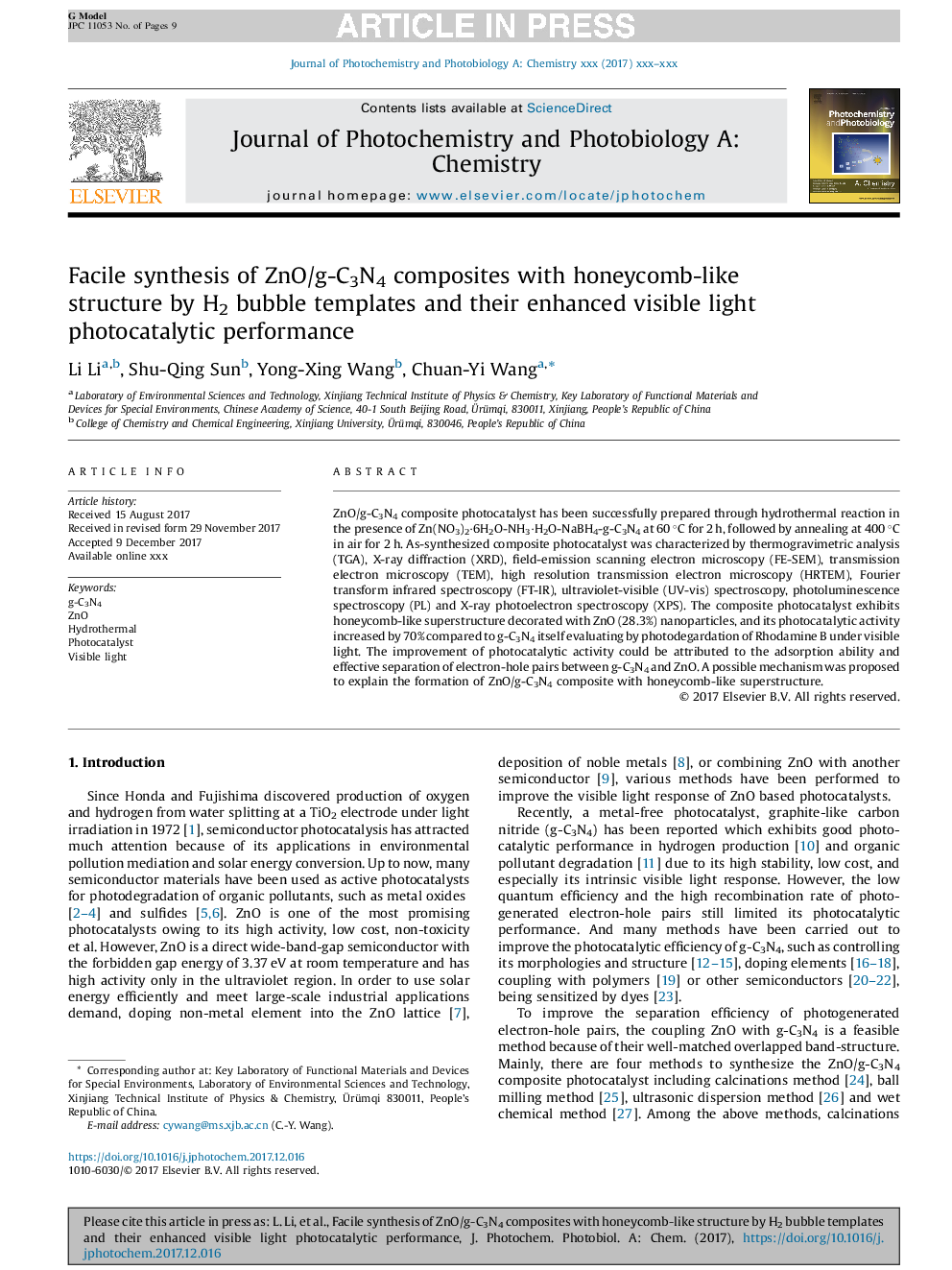| Article ID | Journal | Published Year | Pages | File Type |
|---|---|---|---|---|
| 6492712 | Journal of Photochemistry and Photobiology A: Chemistry | 2018 | 9 Pages |
Abstract
ZnO/g-C3N4 composite photocatalyst has been successfully prepared through hydrothermal reaction in the presence of Zn(NO3)2·6H2O-NH3·H2O-NaBH4-g-C3N4 at 60â¯Â°C for 2â¯h, followed by annealing at 400â¯Â°C in air for 2â¯h. As-synthesized composite photocatalyst was characterized by thermogravimetric analysis (TGA), X-ray diffraction (XRD), field-emission scanning electron microscopy (FE-SEM), transmission electron microscopy (TEM), high resolution transmission electron microscopy (HRTEM), Fourier transform infrared spectroscopy (FT-IR), ultraviolet-visible (UV-vis) spectroscopy, photoluminescence spectroscopy (PL) and X-ray photoelectron spectroscopy (XPS). The composite photocatalyst exhibits honeycomb-like superstructure decorated with ZnO (28.3%) nanoparticles, and its photocatalytic activity increased by 70% compared to g-C3N4 itself evaluating by photodegardation of Rhodamine B under visible light. The improvement of photocatalytic activity could be attributed to the adsorption ability and effective separation of electron-hole pairs between g-C3N4 and ZnO. A possible mechanism was proposed to explain the formation of ZnO/g-C3N4 composite with honeycomb-like superstructure.
Related Topics
Physical Sciences and Engineering
Chemical Engineering
Bioengineering
Authors
Li Li, Shu-Qing Sun, Yong-Xing Wang, Chuan-Yi Wang,
